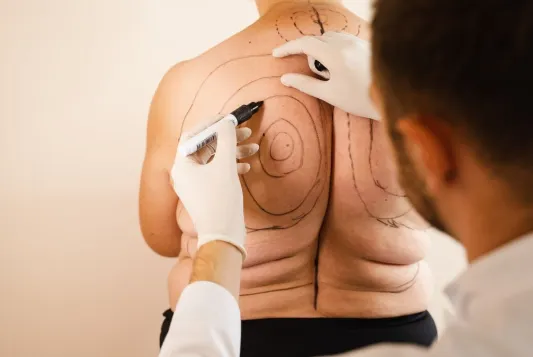Body contouring procedures have become increasingly popular for people who want to improve their shape and boost their confidence. While diet and exercise are key for a healthy lifestyle, they do not always eliminate stubborn fat deposits in certain areas. For those seeking surgical solutions, two terms often come up: liposuction and liposculpture.
If you want to discover the difference between liposuction and liposculpture, it is important to understand what each procedure involves, who may be a suitable candidate, and what results can be expected.
Also Read: Guide to Full-Size Carousels & Ferris Wheels for Amusement Parks
What is Liposuction?
Liposuction is a cosmetic surgery procedure designed to remove excess fat from specific areas of the body. It is most commonly performed on the abdomen, thighs, hips, arms, buttocks, and under the chin.
The procedure involves small incisions through which a thin tube, known as a cannula, is inserted. The surgeon uses this instrument to loosen fat before suctioning it out. Liposuction is not a weight-loss solution but rather a way to shape areas that resist traditional methods of fat reduction.
Key features of liposuction include:
- Suitable for removing larger volumes of fat
- Improves body proportions and contours
- Often combined with other procedures such as tummy tucks or facelifts
- Best suited for patients with good skin elasticity
What is Liposculpture?
Liposculpture is a more refined technique that builds on the foundations of liposuction. While both procedures remove fat, liposculpture places greater emphasis on precision and detail. Instead of focusing on large-volume fat removal, liposculpture aims to contour the body in a more artistic way, enhancing natural curves and definition.
The process is similar, involving small incisions and the use of a cannula. However, liposculpture often uses finer instruments and advanced techniques to carefully shape areas like the waistline, abdomen, arms, and neck.
Key features of liposculpture include:
- Focus on contouring and definition rather than just fat removal
- Often used on smaller, targeted areas for a natural look
- Can highlight muscle lines and create more athletic proportions
- Requires surgical skill and attention to artistic detail
The Key Differences
While liposuction and liposculpture share similarities, the differences are significant in terms of goals and outcomes.
- Purpose: Liposuction focuses on removing fat to reduce bulk, while liposculpture sculpts and defines the body.
- Volume of Fat Removed: Liposuction is suited for larger areas and greater volumes of fat, whereas liposculpture usually removes smaller amounts with more precision.
- Technique: Liposuction often uses standard cannulas, while liposculpture may employ finer tools for detailed shaping.
- Results: Liposuction improves proportions, but liposculpture aims for a more sculpted, athletic, and natural finish.
- Candidates: Liposuction is often best for patients with resistant fat deposits, while liposculpture is ideal for those seeking refinement of body contours.
Who is a Good Candidate?
The choice between liposuction and liposculpture depends on individual goals and body characteristics. In general:
- Candidates for liposuction are those who struggle with stubborn fat pockets despite diet and exercise, and who have good skin elasticity for smooth results.
- Candidates for liposculpture are often closer to their ideal weight and looking to fine-tune specific areas, such as defining abdominal muscles or refining the jawline.
Both procedures are most effective for patients who are healthy, maintain stable body weight, and have realistic expectations about outcomes.
Benefits of Liposuction
- Removes significant volumes of fat in one procedure
- Improves body proportions and silhouette
- Can treat multiple areas at once
- Long-lasting results when paired with a healthy lifestyle
Benefits of Liposculpture
- Enhances definition and natural contours
- Creates a more toned, athletic appearance
- Targets precise areas for subtle yet impactful results
- Provides a tailored, artistic outcome unique to each patient
The Recovery Process
Recovery varies between the two procedures.
- After Liposuction: Patients may experience swelling, bruising, and discomfort for several weeks. Compression garments are often recommended to support healing. Most people can return to light activities within one to two weeks, with full results visible after a few months.
- After Liposculpture: Because liposculpture is often less invasive and involves smaller fat removal, recovery can be shorter. However, it still requires care, rest, and adherence to the surgeon’s instructions to ensure optimal results.
Risks and Considerations
As with any surgical procedure, both liposuction and liposculpture carry risks. These can include infection, uneven results, fluid accumulation, and changes in skin sensation. Choosing a qualified and experienced surgeon reduces these risks and ensures results that look natural and meet expectations.
Patients should also be aware that neither procedure replaces weight loss. Results are best maintained with a balanced lifestyle that includes healthy eating and regular exercise.
Combining Procedures
In some cases, liposuction and liposculpture can be combined for enhanced results. For example, a patient may have larger fat deposits removed through liposuction and then undergo liposculpture to refine contours and create definition. This approach allows for comprehensive body shaping and highly individualised outcomes.
A Practical Example
Consider two patients with different goals. One wants to reduce bulk around the thighs and abdomen that has not responded to diet or exercise. Liposuction is the best choice here, as it can remove larger amounts of fat and improve overall proportions.
Another patient is already close to their target weight but wants to highlight abdominal definition and refine the waistline. Liposculpture provides the precise contouring needed for this more sculpted, toned look.
These examples show how the two procedures serve different purposes, and why professional guidance is essential.
Final Thought
Both liposuction and liposculpture are effective procedures for reshaping the body, but they achieve different outcomes. If you want to discover the difference between liposuction and liposculpture, it comes down to whether your goal is reducing larger areas of fat or refining your natural contours for a sculpted look.
By consulting with an experienced surgeon, patients can make informed decisions about which option best matches their goals, health, and lifestyle. With the right guidance, either procedure can deliver long-lasting improvements that enhance both appearance and confidence.







